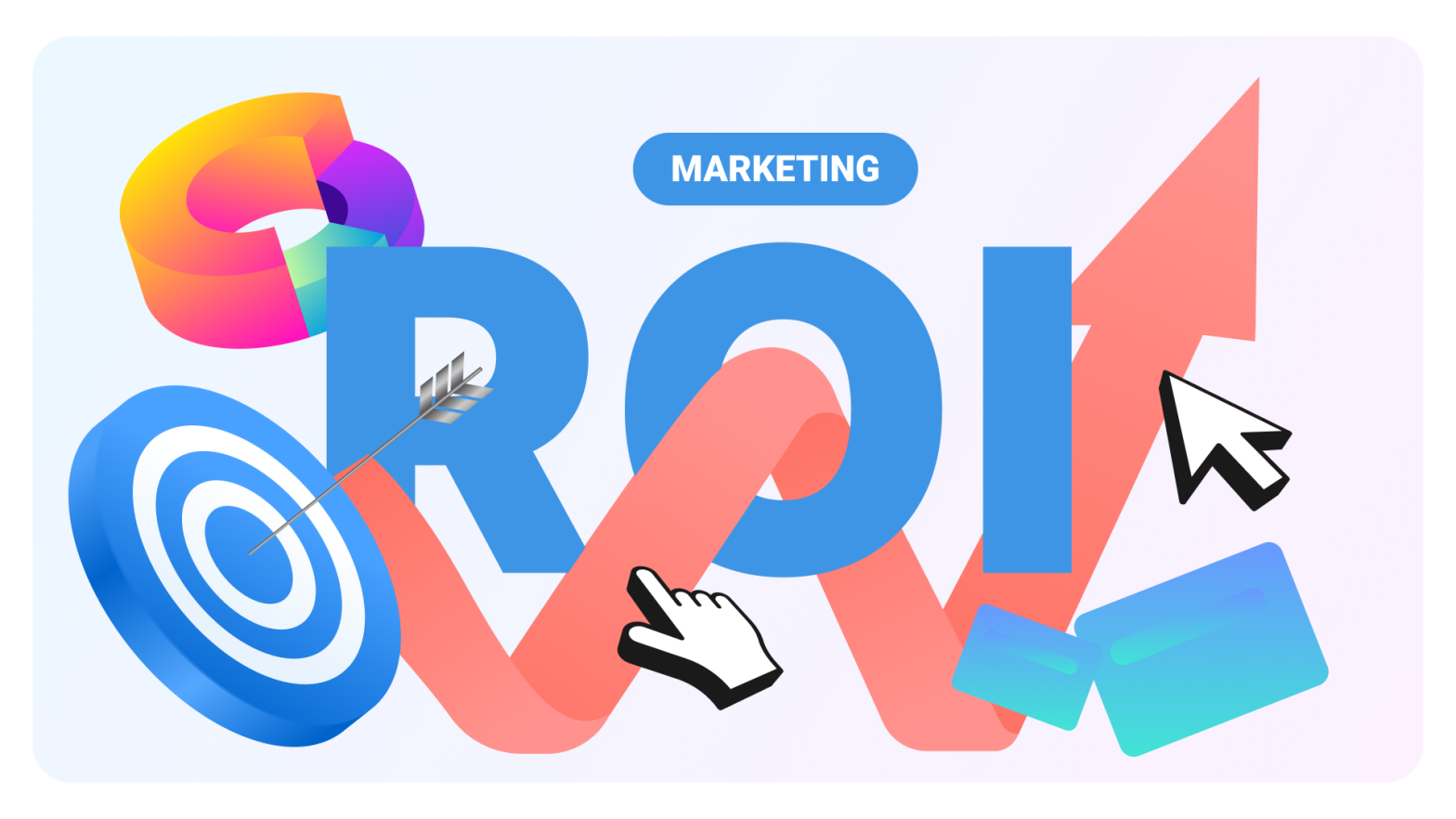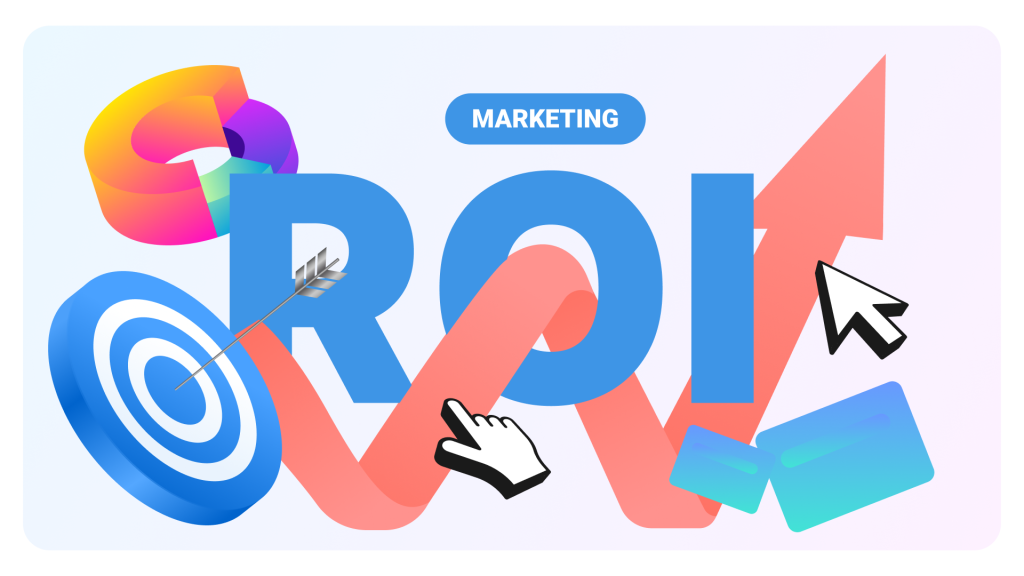
|
5 Practical Tips to Boost Your Marketing ROI
In this article, we will explore five practical recommendations that can help your company analyze and enhance marketing return on investment through the power of AI-driven analytics. We will showcase examples from our work with clients, demonstrating how our analytics effectively helped drive marketing ROI in each case.
Marketing ROI or MROI is a metric that measures the profitability and effectiveness of marketing efforts. Measuring and improving marketing ROI helps businesses grow profitably, make smarter investments, and sustain long-term success.
However there are a few challenges that prevent some companies from effectively working with this key metric.
Marketing ROI measurement challenges
According to the 2024 Nielsen report, about 60% of marketers fail to get a complete MROI picture because they don’t evaluate traditional and digital marketing efforts together.
The main reason for incomplete insights is that companies rely on end-to-end analytics systems that cannot track offline channel performance.
Sometimes the reason is different industries and business models require different attribution methods, leading to inconsistency.
The phase-out of third-party cookies hindered the ability of tools like attribution models to accurately measure marketing performance.
Data discrepancies between marketing and finance also lead to debates over the true effectiveness of campaigns.
Tips to drive your marketing ROI
With our AI-driven analytics platform, we have successfully overcome these challenges, delivering highly accurate, statistically validated insights that are both actionable and easy to apply.
1. Optimize your media mix with AI-based ROI analytics
An optimized media mix is the right combination of high-performing marketing channels to maximize results. However, not all analytics tools provide a comprehensive view. Many companies rely on multiple tools to measure channel effectiveness, leading to fragmented data, with post-click metrics for digital ads, post-view data for online media, and little to no tracking for offline channels like OOH or TV. As a result, businesses struggle to get a unified, comparable analysis of how different channels work together, making it difficult to allocate budgets effectively and optimize marketing ROI.
With our AI-driven effectiveness model, we offer a comprehensive measurement of both online and offline channels in your media mix. Nielsen claims that removing silos in media performance measurement is one of the key trends for the year 2025 that will improve marketing effectiveness by providing a more holistic view of campaign performance across all channels.
Our solution calculates the true impact of each channel providing you with actionable insights into which activities drive the most sales or attract the highest number of new customers. It also helps companies to automate budget allocation based on target KPI or a given budget.
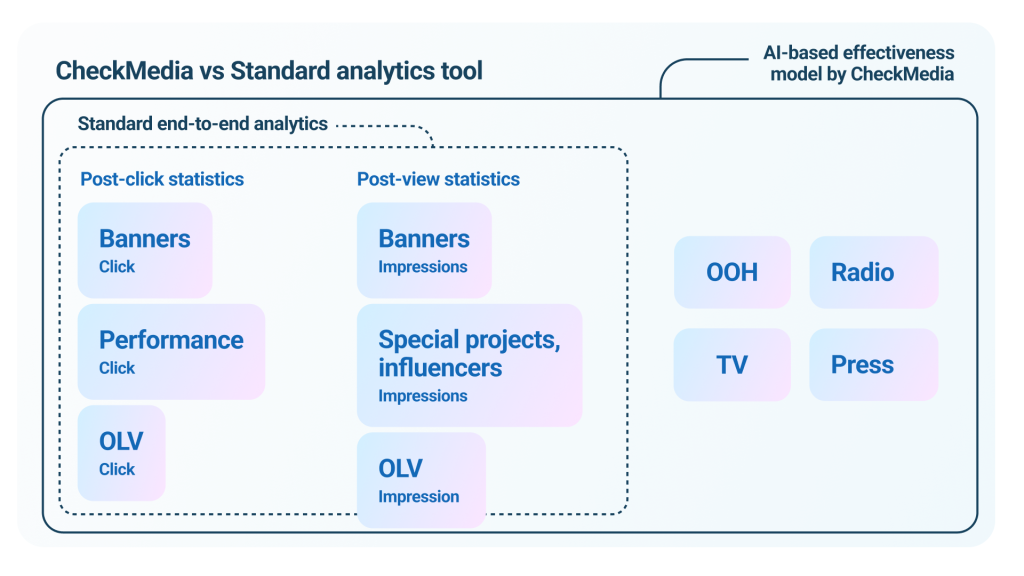
And with every client, the results are unique. For instance, in one case study, our analysis revealed that advertising efforts contributed to only 19.5% of all new customer acquisitions. Meanwhile, the opening of new outlets significantly boosted brand interest, driving 53% of all new clients.
2. Leverage cross-channel synergy
Finding and focusing on the most effective marketing channels is a great way to improve results. But you can take it even further by benefitting from how different channels influence each other. A great example is the combination of TV and performance advertising. TV commercials build brand awareness, making users more familiar with a product. So, when they later see a digital ad for the same product, they’re more likely to click and buy because they already recognize it. This cross-channel synergy can significantly boost marketing performance without increasing costs.
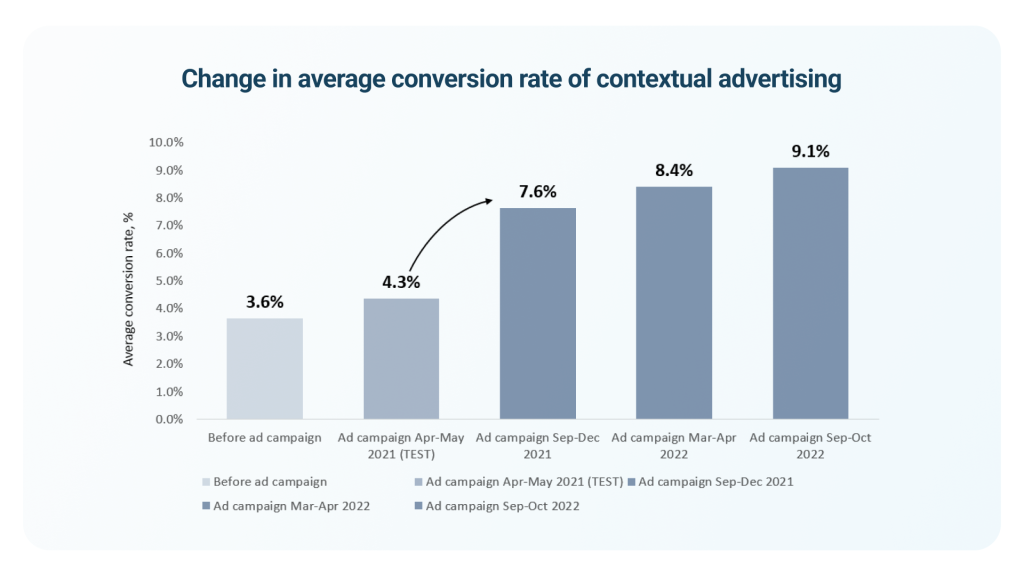
The image above demonstrates campaign performance results from a case study. An insurance marketplace was launched at the end of 2020 with an initial media mix focused solely on performance channels, mainly search and contextual ads. These channels contributed to 3.6% of conversions.
In May 2021, the brand launched test flights of TV and OOH ads. Later the analysis showed a direct increase in performance advertising effectiveness, with conversions rising to 4.3% following the integration of reach channels.
Building on this success, from September to December 2021, the brand launched several additional flights of TV and OOH advertising, further boosting the efficiency of performance ads.
By December 2021, performance-driven conversions had more than doubled, reaching 7.6% compared to pre-May 2021 levels. The brand continued refining this strategy, and by October 2022, performance advertising conversions climbed to 9.1%.
This case demonstrates how the right channel strategy can significantly enhance marketing effectiveness — driving higher revenue without increasing ad spend. By leveraging cross-channel synergy, brands can maximize MROI while optimizing budget allocation. And here we explored how brand campaigns affect performance advertising results.
3. Find efficient investment range
Even the most effective marketing channels can underperform with poor budgeting. With our tool, you can identify the optimal ad spend range for each channel in your media mix to ensure maximum Marketing ROI.
Many companies base their budget allocation on industry benchmarks and past campaign data, yet this doesn’t always lead to optimal results. In our experience, we’ve seen businesses miss the efficiency range, with nearly half of their media mix either underspending or overspending, leading to wasted resources and lost opportunities.
Response curves clearly demonstrate how much you can invest in a channel to get maximum results. It’s necessary to calculate two important points on a graph to find the efficient investment range:
- Minimum Effective Spend – The lowest investment required for the channel to generate meaningful results. Spending below this threshold makes the channel ineffective.
- Saturation Point – The level where additional investment provides little to no extra return. Any spend beyond this point becomes inefficient, requiring budget reallocation to maximize impact.
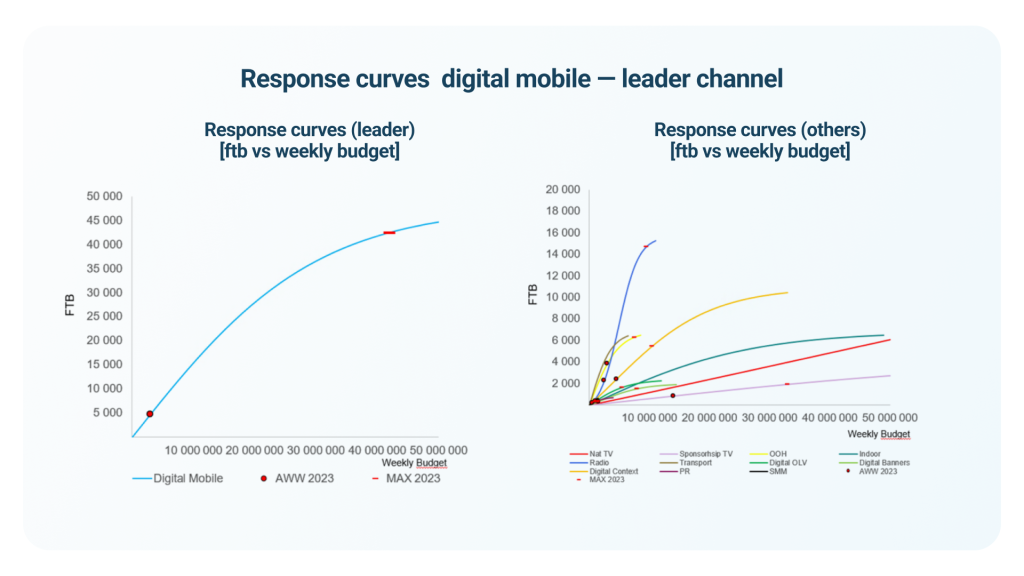
The graph below illustrates response curves for a client’s media mix. We perform this analysis in each case and give recommendations on adjusting channel budgets if necessary. In some instances companies overinvest in a particular channel, therefore reallocating budgets even without increasing overall spending may lead to an improved ROI.
4. Optimize CAC with geo-segmentation
Advanced analytics that provide detailed, location-based insights can significantly enhance marketing effectiveness. In an e-commerce case study, our analysis showed that while CPA advertising had the lowest customer acquisition cost (CAC) at the national level, a deeper regional breakdown revealed that regional TV advertising was the most cost-effective channel in specific areas.
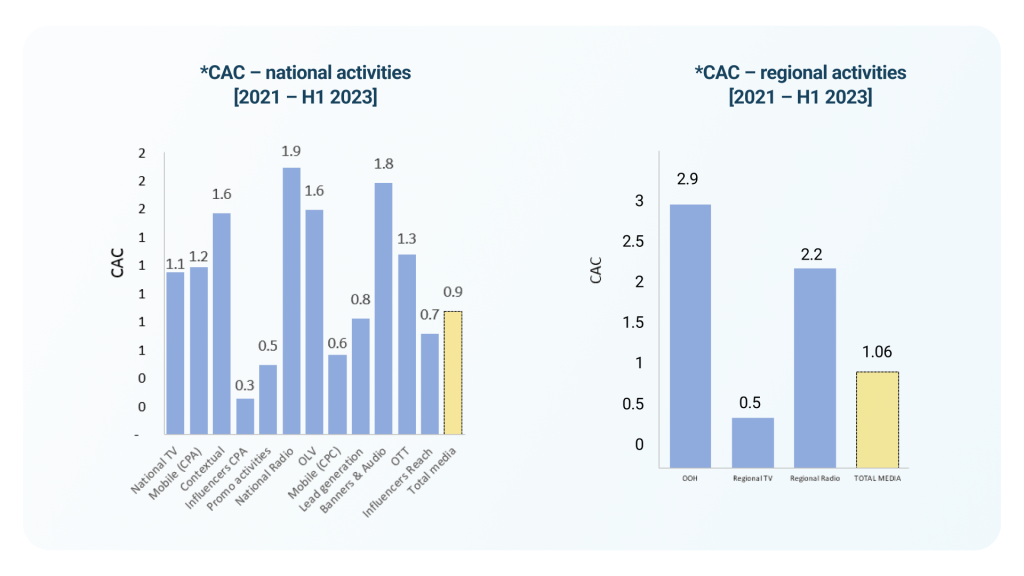
This highlights the importance of going beyond national-level analysis and examining audience segments individually to maximize marketing performance. Effective segmentation is not limited to geography, it also includes demographic, behavioral, and other key factors that influence campaign success. By leveraging granular insights, businesses can make smarter marketing decisions, allocate budgets more efficiently, and improve MROI.
5. Benefit from seasonal trends
Sales seasonality plays a crucial role in maximizing marketing ROI, yet many businesses fail to fully capitalize on it. By understanding when demand for a product naturally increases or decreases, companies can optimize their marketing strategies to improve efficiency and results. For instance, increasing ad spend during peak seasons ensures higher sales, while reducing investment during slower months prevents wasted budget.
Seasonality insights also help fine-tune campaign timing, allowing brands to launch promotions and special offers right when customers are most likely to buy. By leveraging analytics to track and predict seasonal trends, businesses can refine their marketing approach, reduce unnecessary spending, and maximize MROI year-round.
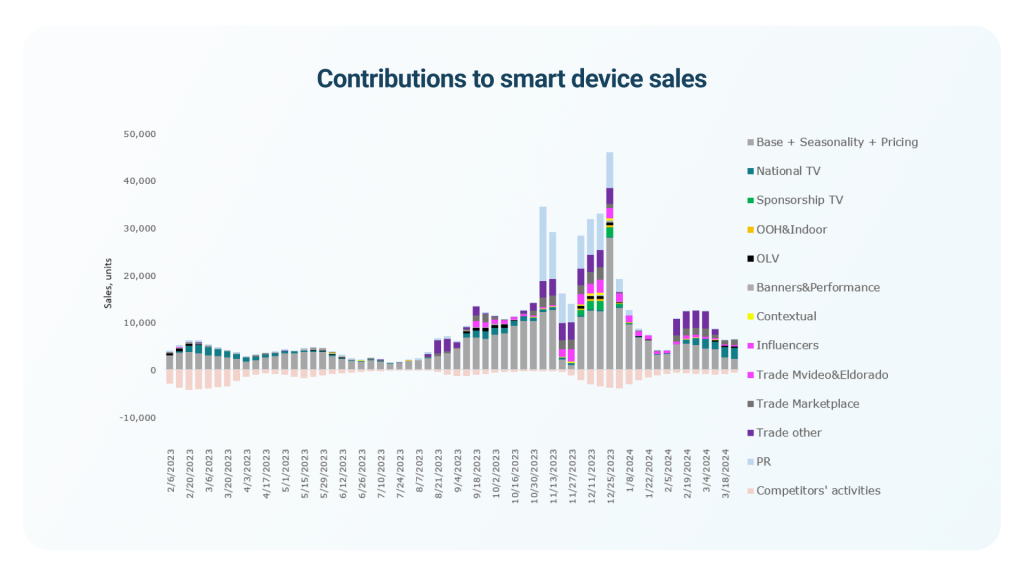
CheckMedia AI-powered analytics to boost marketing ROI
We offer a powerful tool that helps integrate all the marketing hacks mentioned above into your analytics process. With extensive experience across multiple industries, including finance, pharma, e-commerce, insurance, FMCG, and more, we understand the unique challenges of each sector. This allows us to accurately analyze your marketing performance while considering key industry nuances.
Unlike a black-box solution, our analytics models undergo rigorous validation tests to ensure maximum accuracy and transparency.With our tool, you can maximize MROI by:
- Developing data-driven sales and budget plans for better financial control.
- Planning marketing campaigns and testing what-if scenarios to identify the most effective strategies.
- Optimizing budget allocation, forecasting CAC and setting new customer acquisition targets for each channel.
By leveraging AI-driven analytics, you gain the insights needed to make smarter marketing decisions and drive long-term growth.
